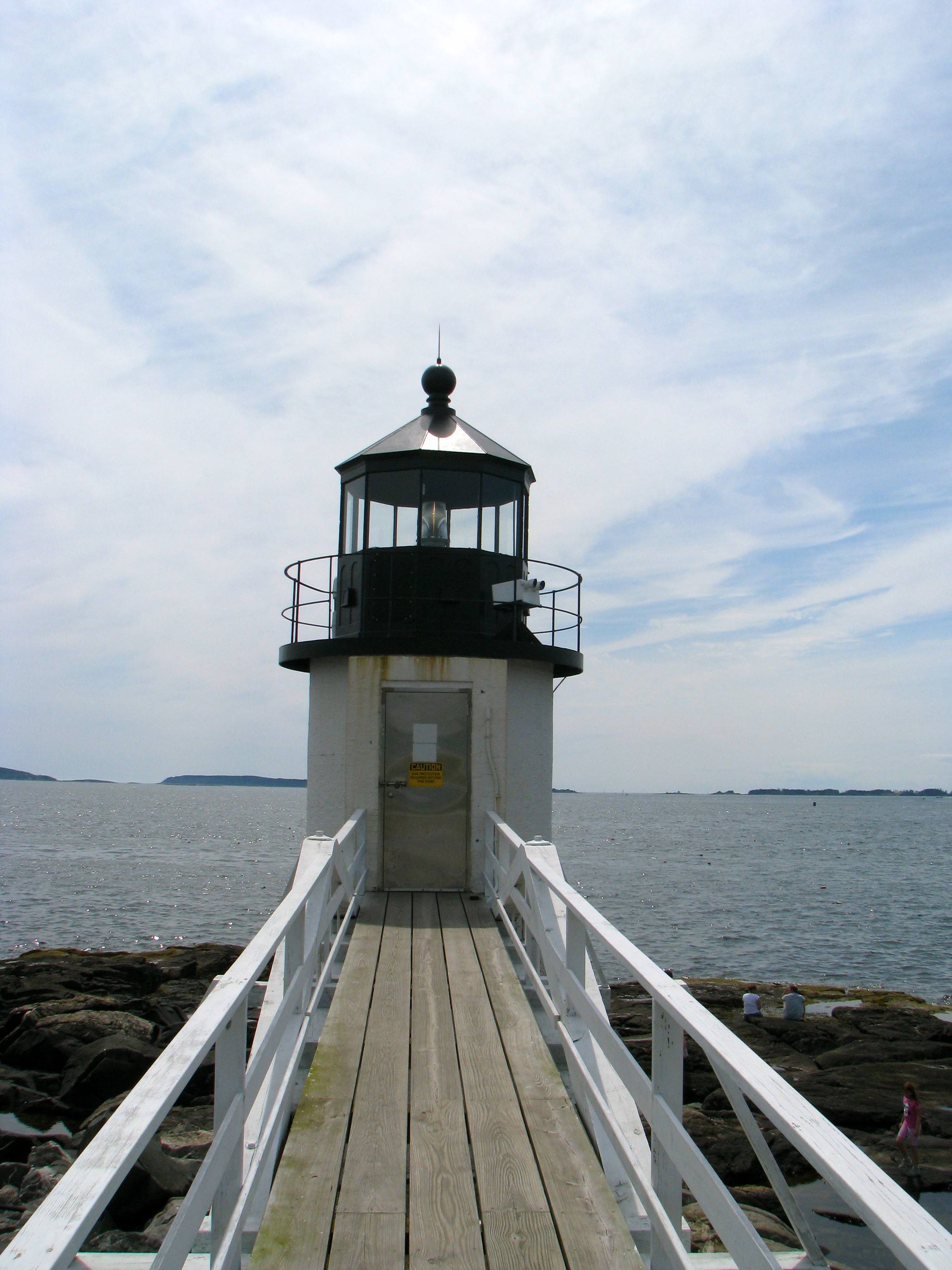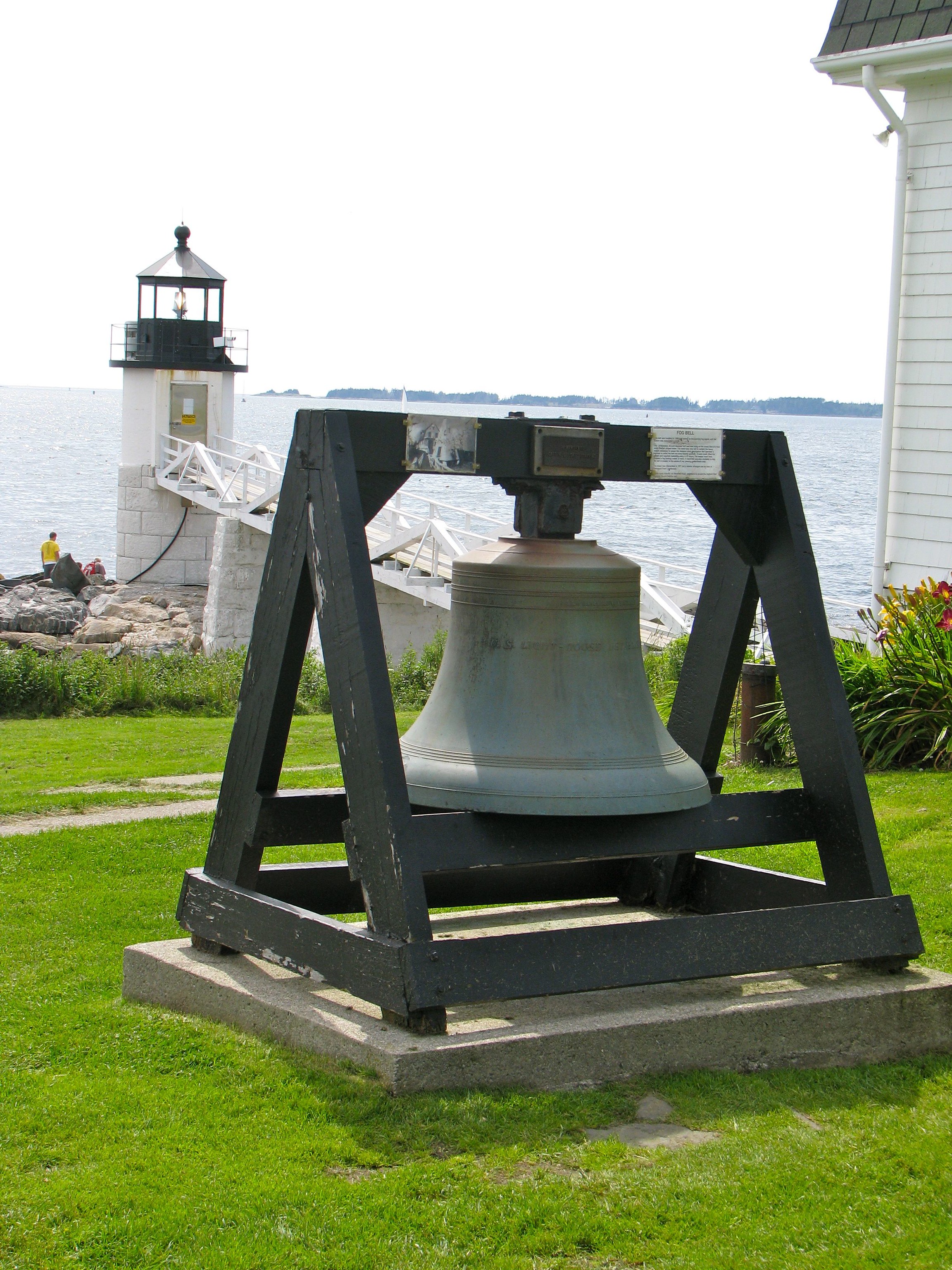Port Clyde, Maine (August 2009)
The Marshall Point Lighthouse appears as the second lighthouse featured in this video I took while traveling around Port Clyde and Muscongus Bay in southeastern Maine (map). This lighthouse can be visited on an easily accessible stretch of the mainland. It also features a museum open to the public during the summer months.
An Attractive Spot

A lighthouse first rose here on Marshall Point, named after Samuel Marshall who was the land owner who sold the property to the government, as early as 1831. The present structure came a little more recent, having been constructed in 1858. We found it one of the more picturesque light stations along the Maine coast, and with its proximity to Rockland and other coastal towns that draw lots of summer residents, it attracts many visitors on day trips to Port Clyde. Marshall Point has a decent-sized parking lot to accommodate tourists and yet it we barely found a spot on the beautiful day we chose to visit.
The angle of this photograph clearly shows that the lighthouse proper stands by itself. With 6.5 acres devoted to the site and with fairly flat terrain — relatively speaking — they could certainly spread things out. The tower and the keeper’s quarters or other supporting structures didn’t need to be combined.
The Tower

The tower rests on a rock ledge right at the water’s edge. One can notice on the previous photograph that it is composed of multiple layers. Granite blocks compose the first twelve feet, with the next twelve feet of brick. Cast iron adorns the top portion, enclosing a small lantern room. This places the lantern at a focal plane of about thirty feet above the waterline.
The entrance to the tower sits about halfway up the structure, the portion made of brick. Keepers could move easily between the quarters and the light by means of a wooden catwalk.
A fifth order Fresnel lens provided lighting, one of the smaller sizes, a perfect option to mark a harbor entrance such as what can be found at Port Clyde. A modern optic encased in plastic provides light today, and the station has long since been automated so that a lighthouse keeper hasn’t been necessary since the early 1970’s. However the station does continue to serve as an active aid to navigation through the present. The original lens can now be viewed within the vast collection of the Maine Lighthouse Museum up the road in Rockland.
Forrest Gump
This structure gained a brief moment of fame in 1994 when it made a cameo appearance in the movie Forrest Gump, in the scene where Forrest ran back-and-forth across the country (the Marshall Point lighthouse tower was his eastern terminus). The museum has photographs on display of the actor Tom Hanks as he visited Marshall Point to shoot the scene for the movie.
Fog Bell

A bell tower became a fixture of the light station in 1898. It rang mechanically as a warning when heavy fog rolled into the harbor. Then a foghorn replaced the bell in 1969. The bell tower was removed at that time since there was no longer any need for it without a bell. The bell, however, continues to live on as a decorative object on the museum lawn.
The curators attached a photograph of the old bell tower to the left side of the crossbeam supporting the bell, which you might be able to see if you look closely above. It shows that the original location was a little closer to the light tower, and it was a tall skinny two story structure designed in a somewhat pyramidal shape.
Keeper’s Quarters

The current keeper’s quarters is not the original structure. The initial building was constructed in 1832 along with the original tower and was renovated in 1875. This was hit by lightning in 1895 and was completely destroyed. The present building, a wooden colonial revival house, was subsequently constructed as a replacement. If fell into disrepair after the Coast Guard automated the light since keepers were no longer necessary.
The St. George Historical Society began a restoration in 1986 and opened the all-volunteer museum in 1990. In 1998 the Town of St. George obtained ownership of the light station from the Coast Guard. Today the Coast Guard has responsibility for the light itself and for the foghorn, but the Town of St. George controls everything else. The entire facility is listed on the National Register of Historic Places.
Readers who have an interest in lighthouses might also want to check my Lighthouse Index page.

Leave a Reply